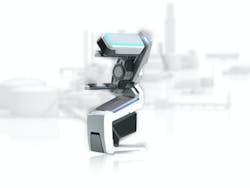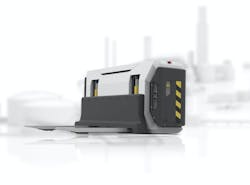Obviously, during a crisis the most important focus needs to be on the worker health and safety. And, for the most part, that sentiment has come through crystal clear during the COVID-19 pandemic. Not only have major industries stopped regular production, some manufacturers have rapidly shifted operations and dedicating resources to create much needed medical equipment. It’s a valiant effort that undoubtedly will save lives.
Of course, at some point business will need to return to some sense of normality. Undoubtedly, the current crisis will ultimately result many manufacturing leaders taking a much closer look at how they are leveraging technology going forward – not just for efficiency, but sustainability. For most there will be a new normal.
After all, manufacturers will restart operations with an entirely new perspective. Business as usual hasn’t unlocked the maximum value for business or workers, Ran Poliakine, founder and chairman of SixAI tells IndustryWeek. “Business as usual should become something better, more efficient and productive. The current crisis has been the catalyst for a change that has been on the doorstep of industry for a while now- a world in which AI can provide intelligent solutions for some of our most essential needs: food, energy, housing, and manufacturing,” he says. “This will allow people to fully unleash their potential by lowering their cost of living and removing the need to do meaningless repetitive work.”
Complementary workforce
With an estimated 80% of the global workforce potentially facing self-isolation in the coming weeks, an increasing number of businesses are seeking to protect their supply chains from potential operational deficits which could damage the stability of production.
The AI robots Musashi AI places in factories have the capacity to integrate seamlessly and within an exceptionally short period of time due to highly advanced deep-learning capabilities. Musashi AI robots can be trained in a matter of days, and sometimes even hours, to perform automated tasks that would take weeks and months to train for with legacy systems. The first two robotic employees include:● Visual Quality Control Inspector: based on artificial intelligence and cutting-edge optics, the visual inspector is able to identify defects in manufacturing lines at an unparalleled rate and accuracy.
● Fully Autonomous Forklift Driver: this robot navigates on its own to perform a variety of materials transport logistics tasks, with high efficiency and safety standards aimed at preventing injuries to staff on the warehouse or manufacturing floor.
“Our goal has always been simple – to undertake the rigorous and repetitive jobs by modernizing workplaces with the deployment of advanced AI technology. It is more important than ever for companies to integrate AI into production lines – keeping workers safe,” he says. “At the same time, those on the frontlines of responding to the virus will be supported by undisrupted vital industry operations and stable economies.“
Using a very small sample size of inspected specimens, Musashi AI combined the methodology behind the golden sample era of computer vision with the neural networks established by practitioners of deep learning to teach their AI to identify what a faulty part looks like. The Musashi AI algorithms identifies defects faster and more accurately than ever before. With advanced optics, deeply integrated with edge computing, Musashi AI robots spot circa 99% of faulty parts in less than two seconds. This significant algorithmic development produces robotics that are engineered to continue efficient production operations, despite the global conditions that COVID-19 has created.
“We believe that employers are seeking to enhance their operations, while still retaining the value of the human worker. There are human jobs for humans in manufacturing, our goal is to redistribute the repetitive and mechanical work back to the machines,” says Poliakine. “Employers will still need human workers to apply judgment and creativity to processes and decision making. Robots will just enable humans to focus on their unique human capacities rather on what machines can do better.”






